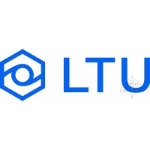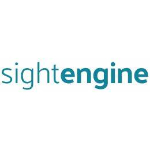TechnologyCounter provides genuine, unbiased real user reviews to help buyers make informed decisions. We may earn a referral fee when you purchase through our links, at no extra cost to you.
List of Best Image Recognition Software
Showing 1 - 13 of 13 productsGoogle Lens is a visual search tool developed by Google. It uses advanced technology to understand the world around us simply by pointing our devices camera. With Google Lens, users can explore their surroundings, shop for products, and get informati...Read Google Lens Reviews
Amazon Rekognition, a powerful image and video analysis software developed by the world-renowned e-commerce company, Amazon. With its advanced and accurate AI-based technology, Rekognition offers a range of impressive features that allow for easy is...Read Amazon Rekognition Reviews
Sterison Image a revolutionary software designed to elevate your image editing experience. With its advanced features and user-friendly interface, Sterison Image is revolutionizing the way photos are transformed, allowing you to bring your creative v...Read Sterison Image Reviews
Beyond Key OCR, is a solution for transforming handwritten or printed text into digital format with speed and accuracy. Say goodbye to manual data entry and hello to efficiency with Beyond Key OCRs advanced technology. Simplify your processes and inc...Read Beyond Key OCR Reviews
WineEngine the ultimate tool for wine lovers and professionals alike. This powerful software is designed to elevate your wine experience by providing a seamless platform for managing inventory, organizing tastings, and discovering new bottles. With W...Read WineEngine Reviews
CamFind is a visual search and recognition app that allows you to search for anything just by taking a photo. With CamFind, you can quickly and easily identify objects, products, and landmarks, and access relevant information, making it the perfect t...Read CamFind Reviews
IceCream Labs is a software designed to take your e-commerce business to the next level. With its advanced technology and innovative approach, IceCream Labs offers a seamless solution for all your product data management needs. Get ready to enjoy a s...Read IceCream Labs Reviews
Imagga is a tool designed to revolutionize the way we manage and organize our visual content. With its advanced image recognition technology and innovative features, Imagga makes it easier than ever before to search, sort, and tag vast collections of...Read Imagga Reviews
Digimizer is a solution for precision measurement and analysis! With powerful tools features, Digimizer is designed to simplify and enhance your digital measurements in various fields such as engineering, science, medicine, and more. Improve your acc...Read Digimizer Reviews
Pixyle.ai is revolutionizing the world of image recognition and visual search through advanced artificial intelligence technology. With its seamless integration and user-friendly interface, Pixyle.ai offers a game-changing solution for industries suc...Read Pixyle.ai Reviews
eCognition Developer is a software that revolutionizes image analysis and object-based image processing. Developed with the latest technologies features, this tool is designed to simplify the complex process of image interpretation for a variety of a...Read eCognition Developer Reviews
IMAGE ID is a software solution for all your image identification needs. With its advanced technology, IMAGE ID helps you quickly and accurately identify thousands of images, saving you time and effort. Say goodbye to manual image recognition and hel...Read IMAGE ID Reviews
Sightengine is an innovative software that revolutionizes the way we understand and analyze visual content. With advanced algorithms and artificial intelligence, it provides precise results for visual recognition, detection and moderation. Experience...Read Sightengine Reviews
Imagga is a tool designed to revolutionize the way we manage and organize our visual content. With its advanced image recognition technology and innovative features, Imagga makes it easier than ever before to search, sort, and tag vast collections of...Read Imagga Reviews
WineEngine the ultimate tool for wine lovers and professionals alike. This powerful software is designed to elevate your wine experience by providing a seamless platform for managing inventory, organizing tastings, and discovering new bottles. With W...Read WineEngine Reviews
- What Is Image Recognition Software?
- Top Reasons Why Businesses Need Image Recognition Software?
- What Are the Top Key Features of Image Recognition Software?
- What Are the Top Benefits of Image Recognition Software?
- What Are the Steps to Choose the Right Image Recognition Software?
- What Are the Types of Image Recognition Software for Different Industries?
- What Are the Technology Trends for Best Image Recognition Software?
- What Are the Deployment Options for Image Recognition Software?
What Is Image Recognition Software?
Image recognition software refers to a branch of artificial intelligence (AI) that empowers computer systems to identify and classify objects, individuals, or animals depicted in digital photos. Automatic facial recognition is frequently employed to facilitate the identification and localization of items inside a digital image.
Additionally, it serves the purpose of categorizing the image, hence enabling potential future utilization. Typically, photo recognition software undergoes training to develop the ability to identify specific characteristics or patterns inside a given digital image.
In certain instances, deep learning techniques may be employed to acquire knowledge of the distinguishing features of different objects. As an illustration, an artificial intelligence system could undergo training to accurately identify the facial features of a particular individual or to distinguish a widely recognized model of an automobile.
An automatic image recognition system has the capability to identify and classify items or patterns within a digital image, hence facilitating the development of a comprehensive understanding of the image's content.
The aforementioned task is achieved by employing algorithms and pre-trained models that possess the ability to identify and discern patterns, objects, and/or individuals depicted in an image. The artificial intelligence system is capable of analyzing and categorizing these photos into distinct classifications.
Image identification software commonly possesses the capability to analyze the pixels of an Image and discern various attributes such as forms, colors, and textures. This technology has the capability to discern and determine the characteristics of many entities, including objects, materials, and individuals.
As an illustration, face recognition software uses algorithms to analyze specific facial attributes, such as the dimensions of the nose, ears, eyes, and chin, in order to discern and differentiate individuals from one another.
The best image recognition software possesses a wide array of applications, encompassing facial recognition, object recognition, facial authentication, medical imaging, Image search, and various other uses. The utilization of this technology has emerged as a potent tool across various industries, including sectors such as security, business, healthcare, and retail.
Top Reasons Why Businesses Need Image Recognition Software?
1. Automate Inventory Management: The utilization of image recognition software enables rapid scanning and detection of objects inside an image, facilitating efficient inventory management by swiftly capturing stock movements and assessing stock levels.
2. Accelerate Inventory Processing: The utilization of automated picture recognition software can effectively enhance the efficiency of inventory record processing and updating, while providing organizations with improved visibility into their managed stock.
3. Reduce Human Labor and Error: Automated procedures have the potential to mitigate the need for human labor in inventory management tasks, hence minimizing the occurrence of human error that arises from manual product counting. Additionally, these processes have the capacity to expedite and enhance task performance, resulting in increased efficiency.
4. Cost Savings: The implementation of automated image recognition technology has the potential to generate cost savings in inventory management processes. This is primarily due to the reduction in personnel costs and the improved accuracy of inventory tracking.
5. Improve Security: The utilization of image detection software has the potential to enhance security and safety measures by enabling the detection of dangers or restricted objects in locations that are challenging for people to access.
6. Capture Attribute Details: Image recognition technology has the capability to discern several aspects of a product, including but not limited to color, size, and shape. This ability facilitates the process of inventory tracking, hence streamlining the management of stock.
7. Automate Inspection: The utilization of image recognition technology can facilitate the automation of inspections through the rapid identification of flaws and irregularities within product photos.
8. Monitor Quality: The utilization of image recognition technology facilitates the precise monitoring of product quality through rapid analysis of products, ensuring consistent adherence to established quality standards.
9. Detect Fraud: The utilization of photo recognition software enables the rapid identification of fraudulent activities, such as the production of counterfeit items.
10. Improve Customer Experience: The process of automating customer service involves the implementation of technological systems and tools to streamline and enhance the delivery of support and assistance to customers. The implementation of tasks such as the detection of customer complaints inside photographs has the potential to enhance the overall customer experience and thereby elevate customer satisfaction levels.
11. Enhance Automation: The implementation of automation techniques, such as facial recognition or voice recognition, has the potential to enhance the efficiency of customer service jobs.
12. Analyze and Optimize Advertisements: The utilization of top image recognition software enables the expeditious analysis of ads, facilitating the identification of successful ones and those that necessitate optimization.
13. Enhance Text Recognition: The utilization of image recognition technology facilitates the expeditious acquisition and transcription of textual content, hence obviating the necessity for manual data entry.
14. Streamline Document Management: Image recognition technology has the capability to autonomously categorize and archive documents, hence facilitating their efficient management.
15. Help Train Artificial Intelligence Algorithms: The best image recognition software enables the training of artificial intelligence algorithms to swiftly and precisely detect and classify items or characteristics depicted in an image.
What Are the Top Key Features of Image Recognition Software?
1. Automated image recognition: Image recognition software possesses the capability to rapidly identify various items, objects possessing specified attributes, and/or elements included inside photographs.
This technology has the potential to assist with various activities, including the digitization of physical documents and the recognition of individuals inside a security framework.
2. Object recognition: picture recognition software possesses the capability to discern and differentiate various items within a picture, as well as identify things that possess specific properties, such as the presence of a person's face in photographs.
3. Image analysis: Sophisticated image analysis algorithms has the capability to detect and classify the salient parts within a picture, utilizing various attributes such as forms, colors, and textures.
4. Object tracking: The best image recognition software possesses the capability to accurately monitor and identify items inside photos and videos, hence enhancing the efficacy of automated surveillance systems.
This technology also proves valuable in several domains, including augmented reality, by facilitating the seamless integration of virtual elements into real-world environments.
5. Image classification: Image classification tools possess the capability to categorize photos and assign descriptive labels to them according to their visual content. This technology has the capability to efficiently index and categorize vast quantities of photos.
6. Facial recognition: The particular functionality of best image recognition software enables the detection and recognition of faces inside an image or video, afterward comparing them to a predetermined database.
7. Scene text recognition: The algorithm possesses the capability to identify textual content included in an image, even when it is concealed or deformed. The utilization of this technique facilitates the extraction of information from visual representations.
8. High-speed recognition: Picture recognition software possesses the capability to rapidly examine and evaluate images, rendering it well-suited for expeditious data processing.
9. Automated labeling: The utilization of top image recognition software has the potential to streamline and facilitate the task of categorizing photographs.
What Are the Top Benefits of Image Recognition Software?
1. Improved Accuracy: Image matching software possesses the capability to accurately identify and discern patterns and objects, hence enhancing operations that rely on precision and accuracy to a considerable extent.
2. Reduced Manual Workload: The implementation of the best image recognition software enables the automation of manual operations, resulting in a reduction of workload.
3. Speed and Efficiency: The utilization of photo recognition software facilitates the rapid identification of patterns and objects, hence significantly expediting the overall process.
4. Enhanced Security: The implementation of real-time image recognition technology can effectively increase and streamline the maintenance of security systems.
5. Big Data Analysis: The utilization of image detection software enables the comprehension of extensive datasets and streamlines the process of analysis.
6. Personalization: The utilization of facial recognition technology in image recognition has the potential to enhance consumer experiences by offering a higher degree of personalization.
7. Improved Customer Interactions: Image recognition tools have the potential to enhance customer interactions through the scanning of facial features and analysis of movements, hence facilitating improved customer engagement.
What Are the Steps to Choose the Right Image Recognition Software?
1. Assess your needs – Initially, it is vital to evaluate the requirements and objectives that are sought after in an image recognition program. Please specify the objectives you intend to accomplish with the software and outline the advantageous features that would cater to your requirements.
2. Research capabilities – Please conduct research on several image identification software options and their respective capabilities, based on the needs you have outlined. It is imperative to direct one's focus toward the precision, scalability, and distinct functionalities that the software presents.
3. Determine your budget – After conducting thorough research, it is advisable to establish a budget allocation that aligns with your financial resources for the acquisition of the program. Determine the essential characteristics required to avoid expenditure on superfluous features.
4. Contact providers – The user should initiate communication with various image recognition software suppliers and engage in comprehensive inquiries regarding the functionality and features of their respective software solutions. Please arrange a demonstration to gain a more comprehensive understanding of the user interface and evaluate its performance in relation to your specific requirements.
5. Compare the options – Conducting a comparative analysis of the available options with regard to their features, performance, and pricing can aid in the process of selecting the most suitable software for one's needs.
6. Try before you buy – Prior to making a purchase, it is advisable to engage in a trial period of several weeks to evaluate the software. This enables individuals to have a more comprehensive understanding of the subject matter and ascertain whether it adequately fulfills their requirements.
7. Review the support – After making the decision to acquire the program, it is advisable to conduct a thorough examination of the customer support services offered by the vendor. It is imperative to ascertain the response time and quality of service offered by the entity in question.
What Are the Types of Image Recognition Software for Different Industries?
Image recognition software is a highly potent tool that finds application across diverse industries. The system possesses the ability to analyze, recognize, and identify patterns within images.
The categorization of image detection software is contingent upon the specific industry, encompassing computer vision and machine learning methodologies.
There exist three distinct categories of picture recognition software that cater to various sectors:
1. Medical Image Recognition Software: This particular software employs sophisticated algorithms to do an analysis of medical photos. The system possesses the capability to identify irregularities, discern injuries, and categorize various forms of medical disorders.
The application of this technology in the healthcare sector encompasses disease diagnosis and tumor detection.
2. Retail Image Recognition Software: This particular software is employed inside the retail sector for the purpose of product recognition. The system possesses the capability to assess visual data, identify various products, and classify them based on their respective product kinds, colors, and sizes.
Additionally, this software possesses the capability to ascertain customer purchases, enhance inventory management, and monitor customer habits.
3. Automotive Image Recognition Software: This particular software is employed inside the automotive sector for the purpose of vehicle identification. The aforementioned program possesses the capability to discern potential hazards on roadways, locate lane markings, and recognize traffic signs.
Additionally, it has the potential to enhance navigation capabilities and enhance driving safety. By acquiring knowledge about the various categories of image identification software that are applicable to diverse sectors, organizations may effectively utilize this technology to enhance their business processes.
What Are the Technology Trends for Best Image Recognition Software?
The advancements in technology have led to significant growth in the field of image recognition software in recent years. The latest developments in this domain encompass deep learning-based techniques, convolutional neural networks (CNNs), and image identification services hosted on cloud platforms.
Deep learning algorithms utilize a hierarchical approach to analyze images, hence facilitating the recognition of intricate patterns. Convolutional Neural Networks (CNNs) have emerged as a prominent technological advancement in the field of image identification software.
This algorithmic approach employs many layers to identify and categorize visual attributes within images, hence enabling more precise recognition compared to conventional techniques. In recent years, there has been a notable surge in the popularity of cloud-based image recognition services.
This can be attributed to their ability to swiftly deploy image identification software functionalities without the requirement of constructing a dedicated infrastructure. These services provide the secure storage of photographs and their corresponding metadata in cloud-based platforms, thereby enabling customers to conveniently use their image recognition system from any device.
What Are the Deployment Options for Image Recognition Software?
The deployment choices for image recognition software exhibit variability contingent upon the particular application at hand.
In the realm of software deployment, three primary possibilities are commonly encountered: cloud-based distribution, on-premise deployment, or deployment as a mobile application.
1. Cloud-based solutions are implemented by the software provider, who assumes the responsibility of hosting the service, while the user's data is securely saved on the servers owned and operated by the company.
This particular choice is commonly employed in the context of larger applications due to its capacity to facilitate rapid integration, scalability, and frequently, a price structure based on pay-as-you-go.
2. On-premise deployment refers to the installation and operation of software and user data within the user's own environment. This particular choice is commonly employed in the context of smaller implementations because to its provision of control and privacy.
However, it should be noted that managing the infrastructure associated with this option may necessitate the allocation of supplementary resources.
3. The deployment of mobile applications is prevalent in the context of applications targeted towards consumers. The application can be accessed by the user using their personal device, while the supplier is responsible for hosting and maintaining the program and data.
This particular alternative is economically efficient and has the capacity to accommodate a large number of people. The optimal deployment strategy for image detection software is contingent upon the specific objectives and extent of the application.













